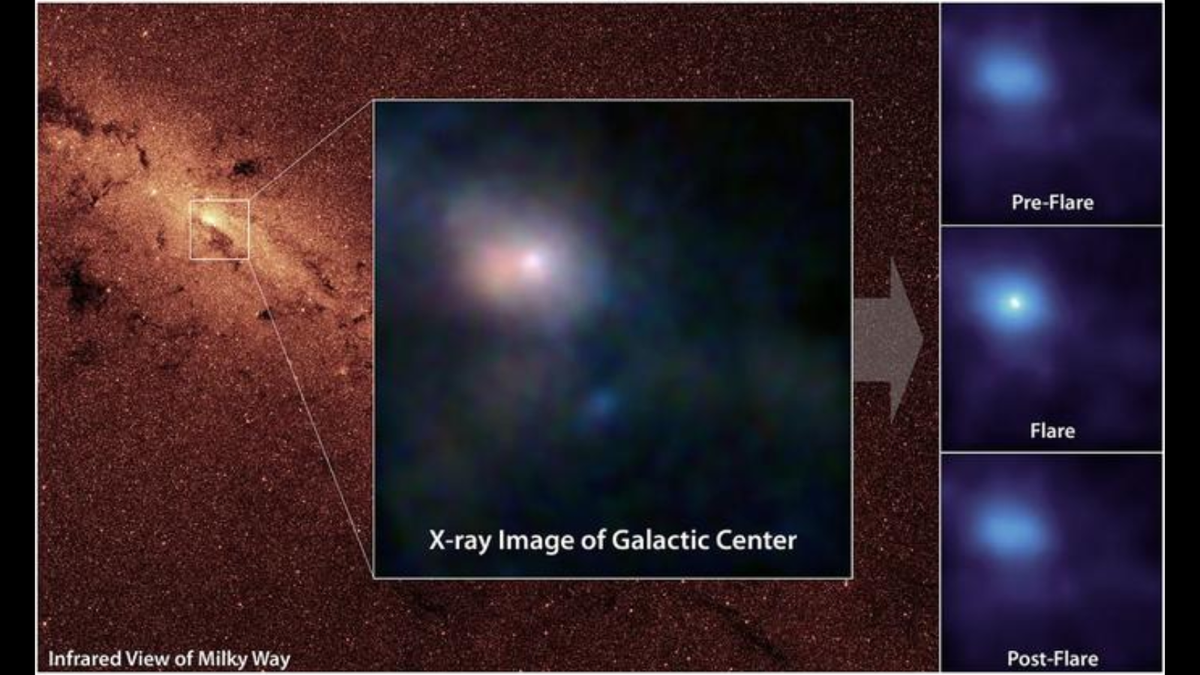Astronomers Discover Cosmic Fireworks at the Heart of the Milky Way
Astronomers have recently observed a series of flares and echoes originating from Sagittarius A* (Sgr A*), the supermassive black hole located at the center of the Milky Way. These remarkable events, often referred to as “cosmic fireworks,” are shedding new light on the mysterious nature of this dark cosmic entity that dominates our galaxy.
The groundbreaking discovery was made by a team of researchers from Michigan State University who meticulously analyzed data spanning several decades collected by NASA’s Nuclear Spectroscopic Telescope Array (NuSTAR) telescope. This data revealed nine significant flares emitted by Sgr A*, which had previously gone unnoticed by the scientific community.
“We are privileged to witness these extraordinary cosmic phenomena unfolding at the core of our Milky Way galaxy,” stated Sho Zhang, the lead researcher and an assistant professor at the Department of Physics and Astronomy at Michigan State University. “These flares and echoes illuminate the darkness of space, allowing us to explore realms that would otherwise remain hidden.”
Unveiling the Secrets of Supermassive Black Holes
Supermassive black holes like Sgr A* are believed to reside at the centers of most large galaxies. These colossal entities, with masses millions to billions of times greater than our Sun, are surrounded by an invisible boundary called an event horizon. Beyond this point, the black hole’s gravitational pull is so intense that not even light can escape.
Surrounding the event horizon is an accretion disk, a flattened cloud of matter that emits intense radiation due to the extreme tidal forces generated by the black hole. Additionally, some of the charged particles in the disk are expelled as high-speed jets from the black hole’s poles, producing bright electromagnetic radiation.
Despite their massive appetites, not all supermassive black holes are actively feeding on nearby matter. Sgr A*, for instance, consumes matter at an incredibly slow rate, equivalent to a human consuming a single grain of rice every million years. Thus, detecting flares from this relatively “quiet” black hole presents a unique challenge.
Decoding X-ray Flares and Echoes
Grace Sanger-Johnson, a researcher at Michigan State University, focused on analyzing the high-energy X-ray flares emitted by Sgr A*. By studying these intense bursts of light, the team aims to decipher the conditions surrounding the black hole and gain insights into its behavior.
In parallel, Jack Uteg, another member of the team, investigated subtle echoes originating from a massive molecular cloud near Sgr A*, known as “the Bridge.” These echoes, caused by X-ray emissions reflecting off the cloud, provided a historical record of past activity from the black hole.
“Our analysis of the X-ray echoes has allowed us to reconstruct the recent cosmic history of Sgr A*,” explained Uteg. “By studying these phenomena, we hope to unlock the mysteries surrounding the behavior of supermassive black holes.”
The team’s findings were presented at the 244th meeting of the American Astronomical Society, sparking further interest in unraveling the enigmatic nature of these cosmic giants.
Image/Photo credit: source url





